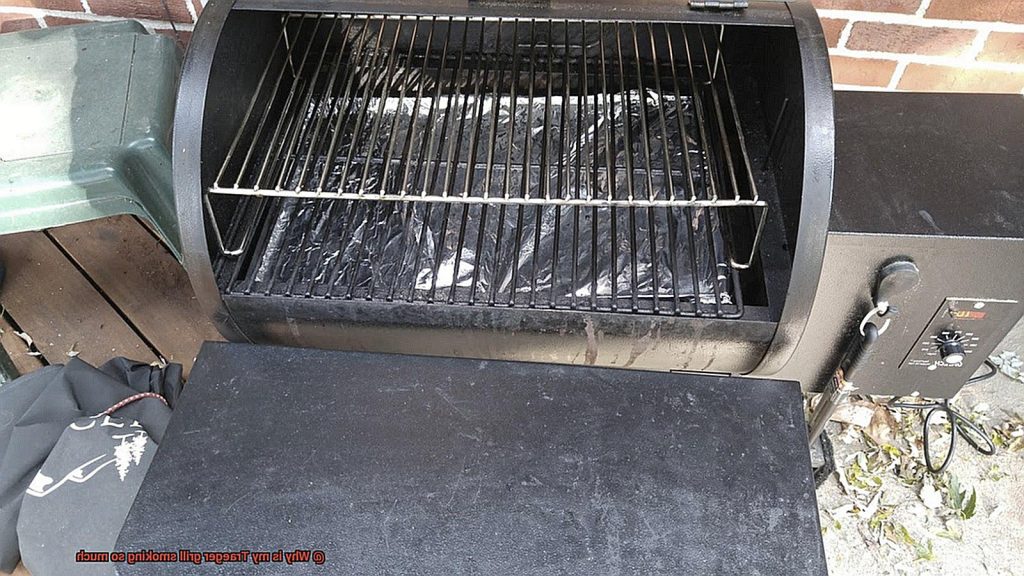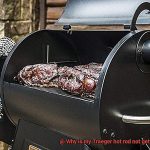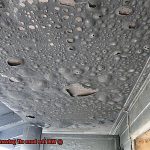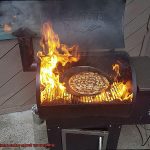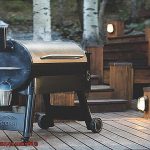Imagine the excitement of firing up your trusty Traeger grill, eager to cook up a mouth-watering meal, only to be engulfed in a thick plume of smoke as soon as you close the lid. Not exactly the BBQ experience you were hoping for, right? Don’t worry, because you’re not alone. Many Traeger grill owners have faced the frustrating and confusing problem of excessive smoke production.
If you’re scratching your head wondering why your Traeger grill is smoking so much, fret not. In this blog post, we’ll explore the most common reasons behind this issue. From poor pellet quality to improper heat settings, we’ll cover it all. We’ll also dive into the basics of smoking on a Traeger grill and how to achieve that perfect balance of smoke and heat to take your BBQ game to new heights.
So whether you’re a seasoned pitmaster or just starting out on your Traeger journey, this post is for you. By the end of it, you’ll have a better understanding of what’s causing excessive smoke production on your Traeger grill and how to fix it. So grab yourself a cold beverage and let’s get started.
Contents
Common Causes of Excessive Smoke from a Traeger Grill
Grilling with a Traeger grill is all about the perfect balance of smoke and flavor. However, when you’re experiencing excessive smoke, it can be a cause for concern. Fear not, as we’ve researched the common causes of excessive smoke from a Traeger grill, and how to fix them.
Firstly, the type of pellets you use can have a significant impact on the amount of smoke produced. Traeger grills are designed to use hardwood pellets like oak, hickory, or maple. Using softwood pellets like pine can result in excessive smoke due to their high resin content. Stick to hardwood pellets to keep your smoke levels under control.
Secondly, if your grill is dirty, it can lead to incomplete combustion and excessive smoke. Regular cleaning and maintenance can help prevent this issue. Make sure to clean the firepot and grill grates often to keep things running smoothly.
Thirdly, a malfunctioning temperature control system can cause too little or too much heat, leading to incomplete combustion and flare-ups that produce more smoke than necessary. Make sure your temperature control system is functioning correctly to avoid any unnecessary smoke.
Lastly, fatty meats like pork shoulder or ribs can release excess grease, causing flare-ups and leading to excessive smoke. Trimming excess fat and using indirect heat can help prevent this issue. Plus, it’s healthier for you.
Pellet Quality and Storage
Pellets that are too moist or have been exposed to moisture can cause incomplete combustion, leading to excessive smoke. To prevent this, store your pellets in a dry, cool place like a garage or shed to ensure they are in top-notch condition when it’s time to fire up the grill.
But it’s not just about storage; the quality of pellets is equally crucial. High-quality pellets made from hardwoods like oak or hickory provide consistent heat and flavor, while low-quality pellets made from softwoods like pine or spruce produce more ash and creosote buildup, leading to dangerous conditions. So always buy pellets from reputable brands and check the packaging for the type of wood used.
To keep your pellets fresh, store them in airtight containers or bags to prevent air or moisture from getting in. This ensures a consistent burn with minimal smoke, allowing you to enjoy a delicious, smoky flavor without any unpleasant surprises.
If you notice excessive smoke when using your Traeger grill, check the pellet quality and storage conditions before making any adjustments to the grill itself. It could be as simple as changing the pellets or ensuring they are stored correctly.
In summary, pellet quality and storage play a crucial role in achieving the perfect flavor and smoke on your Traeger grill. Follow these tips to ensure a consistent and efficient burn with minimal smoke. Happy grilling.
Dirty Grills and Grease Buildup
Excessive smoking due to dirty grills and grease buildup can be frustrating and affect the overall performance of your grill, causing uneven cooking. But don’t worry, as an expert on this topic, I have some tips to help keep your grill clean and in top shape.
Firstly, regular cleaning is essential. Use a grill brush or scraper to remove any food debris from the grates and then remove the drip tray and give it a thorough cleaning with warm soapy water. Don’t forget to also wipe down the interior of the grill, especially around the firepot, to remove any residual grease and debris.
If you want to take your cleaning game up a notch, consider using a degreaser or oven cleaner specifically designed for grills. Simply spray it onto the grates and interior surfaces of your Traeger grill, let it sit for a few minutes, then rinse it off with warm water. Your grill will thank you.
But cleaning alone won’t solve all your problems. Proper maintenance is also crucial. Make sure to empty the grease bucket regularly and replace any worn or damaged parts as needed. Neglecting these maintenance tasks can lead to even more grease buildup and smoking issues.
Temperature Control Issues
Temperature control is a crucial component of grilling, and it plays a significant role in preventing excessive smoke production. When your grill’s temperature is inconsistent, it can produce more smoke than necessary, leading to unpleasant flavors and burnt food. Therefore, ensuring that your grill maintains a consistent temperature throughout the cooking process is essential.
One of the most common reasons for temperature control issues is a malfunctioning temperature controller. This vital component significantly affects your Traeger grill’s performance, so it’s crucial to ensure that it’s working correctly. By using an external thermometer to measure the temperature inside the grill and comparing it with the temperature displayed on the controller, you can quickly determine if your temperature controller needs repair or replacement.
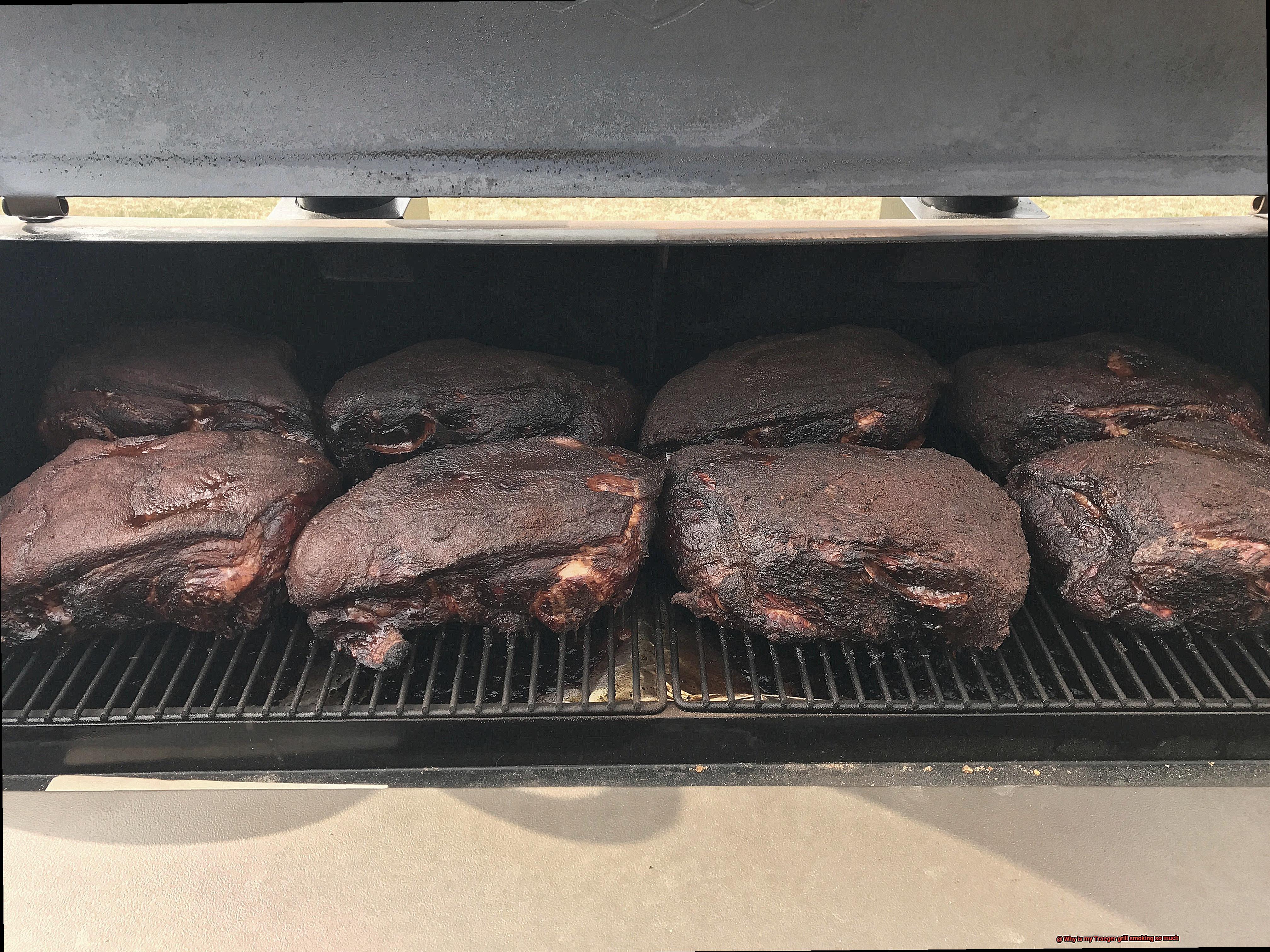
Another issue that can cause temperature control problems is the buildup of ash and grease inside the grill. When these residues accumulate over time, they can impede heat circulation and prevent your Traeger grill from maintaining a stable temperature. Regular cleaning can help avoid this problem. Using a degreaser or oven cleaner can be an excellent way to give your grill a deep clean and prevent buildup.
Lastly, it’s essential to use high-quality pellets that are specifically designed for Traeger grills. Poor quality pellets can cause temperature fluctuations, leading to excessive smoke production. Investing in quality pellets will not only improve your grilling experience but also keep smoke production under control.
How to Monitor Temperature for Optimal Burning and Smoke Production
When it comes to smoking food on a Traeger grill, achieving the perfect balance of temperature and smoke is crucial for mouth-watering flavor. Monitoring the temperature of your grill is the first step towards achieving optimal burning and smoke production for your favorite meats and vegetables. Here are five sub-sections that will help you master the art of smoking on a Traeger grill.
Use an Accurate Thermometer
Using an accurate thermometer is essential for monitoring the temperature of your Traeger grill. While Traeger grills come with a built-in digital thermometer, it’s always a good idea to have a separate thermometer to double-check. Place the thermometer in the center of the cooking grate where your food will be cooking and avoid touching any metal parts or the sides of the grill. This will give you an accurate reading of the temperature inside the grill, allowing you to adjust the settings as needed.
Adjust Temperature Settings Accordingly
Once you have an accurate thermometer in place, you can adjust the temperature settings on your Traeger grill accordingly. The ideal temperature range for smoking on a Traeger grill is between 180-225°F. Different types of wood pellets will burn at different rates and produce varying amounts of smoke, so you may need to experiment with different pellet blends to find the perfect combination for your tastes.
Maintain Consistent Temperature
Maintaining consistent temperature throughout the cooking process is crucial for optimizing smoke production. Any fluctuations in temperature can cause incomplete combustion and excess smoke production. To prevent this, avoid opening the lid of your Traeger grill too often, as this can cause heat loss and lead to temperature fluctuations. Using a drip tray to collect any excess grease or moisture that may cause flare-ups and affect temperature control is also important.
Use the Right Amount of Pellets
Using the right amount of pellets is key to achieving optimal smoke production on your Traeger grill. Too many pellets can cause excessive smoke production, while too few can result in a lack of smoke flavor. The Traeger website recommends using approximately one pound of pellets per hour of cooking time for most recipes. However, you may need to adjust this based on your specific dish and pellet blend.
Monitor Smoke Production
Monitoring the amount of smoke being produced is just as important as monitoring the temperature. If you notice that your Traeger grill is producing too much smoke, you may want to reduce the number of pellets being used or adjust the temperature settings. On the other hand, if you’re not getting enough smoke flavor, you may need to increase pellet usage or switch to a different blend.
Tips for Cleaning Your Traeger Grill Regularly
Regular cleaning of your Traeger grill is essential if you want to maintain its efficiency and ensure that it produces the right amount of smoke for your grilling needs. Here are some tips to help you keep your Traeger grill in top shape:
Clean the grates
The grates are where all the magic happens, and they can accumulate a lot of dirt, grease, and food particles over time. To keep them clean, use a grill brush or scraper to remove any debris, and then wash them with warm soapy water. This will help prevent excess smoke from building up inside the grill and ensure that your food tastes its best.
Empty the ash
Traeger grills use wood pellets as fuel, which creates ash as it burns. Make sure to empty the ash from the firepot after every use to prevent excess smoke and maintain proper airflow. This will also help prevent damage to your grill’s heating element.
Clean the drip tray
The drip tray collects grease and other liquids, which can lead to excessive smoke if not cleaned regularly. To clean it, remove the tray and wash it with warm soapy water. You should also inspect the grease drainage system regularly to ensure that it’s functioning properly.
Check the fan blades
The fan helps circulate air inside the grill, which is essential for maintaining consistent cooking temperatures. Over time, however, it can become clogged with dust and debris, which can affect its performance. Check the fan blades periodically and clean them as needed using a soft-bristled brush.
Inspect the auger
The auger is responsible for feeding pellets into the firepot, so it’s important to keep it clean and functioning properly. Remove any debris or buildup from the auger and make sure it moves smoothly. You should also inspect the firepot regularly to ensure that it’s free from ash and other debris.
Troubleshooting Tips for Excessive Smoke Production on a Traeger Grill
If you’re an avid griller, you know that excessive smoke on your Traeger grill can be a real headache. Not only does it ruin the taste of your food, but it can also pose health hazards due to the release of harmful chemicals. But fret not – reducing excessive smoke production is easier than you think. Here are five sub-sections on how to troubleshoot this issue.
Use high-quality pellets
Using low-quality pellets is one of the most common culprits for excessive smoke production on a Traeger grill. These pellets contain fillers and binding agents that lead to more smoke production. Opt for high-quality pellets made from 100% hardwood and stored in a dry place for a cleaner burn and less smoke.
Clean your grill regularly
A dirty Traeger grill can obstruct airflow, preventing the pellets from burning efficiently and resulting in more smoke production. Ensure that you clean your grill regularly by removing any debris and wiping down the grates with a grill brush.
Check the temperature
A temperature that is too low can cause the pellets to smolder instead of burn, resulting in more smoke production. It’s crucial to set your grill temperature according to the recipe or food you’re grilling.
Adjust the air intake
The air intake controls how much oxygen flows into the firepot, which affects how efficiently the pellets burn. If there is too much oxygen flowing into the firepot, it can cause excessive smoke production. Adjust the air intake to reduce the amount of oxygen flowing into the firepot for a cleaner burn.
Check the gasket
A worn or damaged gasket can allow excess smoke to escape, leading to more smoke production on your Traeger grill. Make sure that your grill’s gasket is in good condition and seals the lid tightly.
U3x8mou0EBM” >
Conclusion
In conclusion, the billowing clouds of smoke emanating from your Traeger grill can be a real buzzkill when you’re trying to cook up a storm. But don’t fret – we’ve got your back with some tips and tricks to help you get that perfect balance of smoke and heat for mouth-watering BBQ meals.
From pesky pellet problems to grimy grills and grease buildup, we’ve covered all the common causes behind excessive smoke production. So, let’s get down to business. First up, pellet quality and storage are critical factors in achieving the perfect flavor and smoke on your Traeger grill. Make sure you’re using high-quality pellets stored in a dry place for optimal results.
Next, regular cleaning and maintenance are essential to prevent incomplete combustion and excessive smoke due to dirty grills and grease buildup. So roll up your sleeves, grab a brush, and give your grill some TLC before firing it up.
Temperature control is also crucial for preventing excess smoke production. Ensure your temperature control system is functioning correctly, monitor the temperature of your grill with an accurate thermometer, adjust temperature settings accordingly, maintain consistent temperature, use the right amount of pellets, and keep an eye on smoke production.
Lastly, if you notice excessive smoke when using your Traeger grill, check the pellet quality and storage conditions before making any adjustments to the grill itself. By following these tips for cleaning your Traeger grill regularly and troubleshooting excessive smoke production issues like a pro, you’ll be able to enjoy delicious BBQ meals without any unpleasant surprises.

